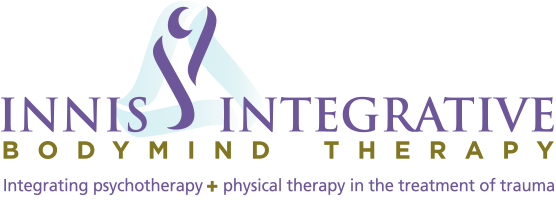Somatic Therapy
Using it to Connect and Feel Safe Again
What is Somatic Psychotherapy and is it right for you?
Perhaps you have heard of somatic therapy and wonder what it is and how it might be different from other kinds of psychotherapy. Maybe you’ve engaged with traditional talk therapy in the past but still notice that when you have fearful or worrisome thoughts and memories, your body tenses up, your breathing gets short and shallow, making it hard to breathe and think.
Have you ever noticed your palms getting cold, clammy, and sweaty, or feel your heart racing, or feeling trapped and needing to escape when you think of a particular person, or situation? Do you get triggered when you see, smell, or hear something related to a trauma memory?
Have you ever experienced your body freezing up with paralyzing fear, like a deer in the headlights? All of these descriptions are connected with autonomic nervous system dysregulation associated with trauma and calls for somatic psychotherapy.
You might be wondering if somatic psychotherapy is only helpful with trauma? The answer is no, somatic psychotherapy is effective for any physical and emotional distress.
Somatic therapy address these, and many other issues, by allowing the body to release holding patterns associated with trauma, physical injury, chronic illness, chronic pain, sexual assault, relational and childhood neglect and trauma, and stress.
The responses to these trauma situations are held in the nervous system and felt in the body. Working with body-centered somatic therapy has been found to be more effective for trauma renegotiation and resolution than traditional talk therapy because it focuses directly on the nervous system and the experiences felt in the body.
When we look at our physical, emotional, and associated thoughts through the lens of mindbody health it is easy to understand how all three interweave and interface into what we experience in our bodies.
There are many types of somatic therapies. The three that I have studied extensively and acquired experience with are Somatic Experiencing, Brainspotting, and Somatic Attachment therapy called DARe (Dynamic Attachment Re-patterning Experience).
Somatic Experiencing (SE) is a neurobiological therapy used for treating people suffering from PTSD and other stress induced symptoms. While working together we will identify and bring awareness to body-felt sensation, which are coupled with traumatic memories and incomplete self-protective defensive reactions. The work allows for the release of the activation slowly and within your range of tolerance. One of the main differences between SE and traditional talk therapy is that the process does not require you to talk about the traumatic details of the event, unless you want to. The outcome will be a reduction of the activation that is felt in the body i.e., decreased muscle tension, reduction of emotionality, anger, fear, and collapse.
Brainspotting is another somatic psychotherapy model. While working together we focus on identifying, processing, and releasing traumatic memories, emotional stresses and the body-felt holding patterns associated with your memories. Trauma overwhelms the brain’s ability to process and integrate traumatic experiences while they are happening. When inadequately processed, the unprocessed memories become frozen in time.
Brainspotting uses the power of our highly attuned therapeutic relationship and brain-based processing, focusing directly on the limbic system, a more primitive reactive part of the brain. It is based on the premise that 'where you look affects how you feel' and finds that eye positions correlate with unconscious, emotional stresses. It reaches parts of the brain that are not generally accessed through traditional talk therapy approaches and most other types of therapy.
Dynamic Attachment Repatterning (DARe) is a somatically based attachment therapeutic approach that embraces several core understandings: we are all inherently hardwired to attach to our caregivers and loved ones, and when early attachment wounds or disruptions occur, we can overcome the effects of these core traumas. While using this somatic approach we use corrective, therapeutic experiences to help alleviate deep-rooted, distressful attachment issues that may be interfering with your ability to connect and feel at ease with others and yourself.
I apply somatic psychotherapy to Trauma Therapy, PTSD Treatment, Sexual Trauma Therapy, Grief Counseling, Chronic Pain, and Chronic Stress Management. Regardless of your past experiences with psychotherapy, I invite you to consider a somatic approach. With an individually personalized therapeutic treatment plan and your commitment to the therapy process, I believe you can experience life fulfilling changes. I invite you to contact me through the Contact Me button with any questions you may have.






